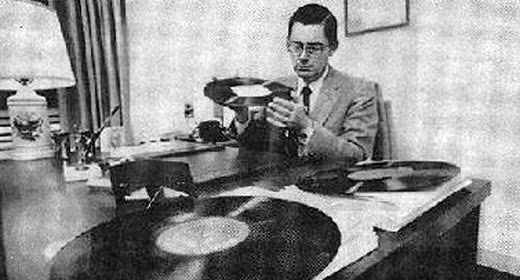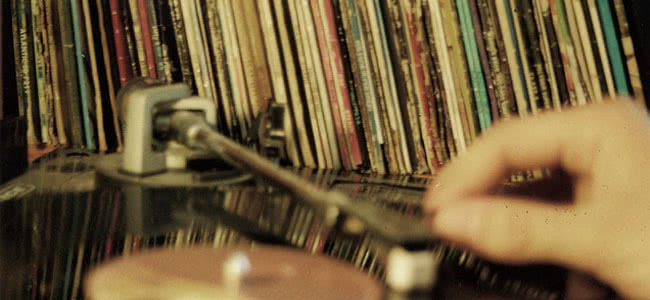These days, with the collective knowledge of the internet and smartphone apps like Shazam offering, identifying music is just a few simple clicks away.
But what about the pre-internet era? Or even back before mp3s and CDs? Well people could have always turned to an American doctor who had the superhuman-like ability to recognise a vinyl record with his naked eye.
Just by looking at the grooves of a vinyl record, Philadelphia resident and physician Arthur B. Lintgen can identify a phonograph recording in just a matter of seconds, as music blogger Alan Cross (via the Highly Sensitive and Creative blog) details.
A TIME article, entitled ‘Read Any Good Records Lately?’, from 4th January 1982 describes Dr. Lingten’s freakish ability: “[he] simply holds a disc flat in front of him, turning it slightly this way and that and peering along its grooves through his thick glasses. After a few seconds he calmly announces, as the case may be, ‘Stravinsky’s Rite of Spring’ or ‘Strauss’s Atpine Symphony.”
The self-described audiophile and music buff had first discovered his remarkable gift when he was challenged by his friends to do it as a party trick, surprising both himself and his colleagues when he did, as the Time piece describes.
Rather than any Robert Johnson-styled deals with the devil at the crossroads, Lintgen’s ‘vinyl vision’ was achieved through his uncanny ability to recognise the physical construction of the grooves and contours of a vinyl record in combination with his encyclopaedic knowledge of classical music; able to recognise sections of music that were loud, quiet and even particular symphonic movements.
(Image: Arthur B. Lingten Source: Highly Sensitive and Creative)
In some cases, his in-depth knowledge of different labels allowed him to even identify the orchestral conductor; “I also know how the pressings of different labels look, so I can often figure out who is conducting,” says the good doctor in an article by the New York Times that chronicled Lintgen at the height of his 80s infamy, detailing his vinyl vision as a result of his index-like brain than any extra-sensory abilities in an article from 19th November, 1981 titled ‘A Man Who Sees What Others Hear’.
The New York Times piece describes the physician as “a dedicated audiophile with an extensive knowledge of the record catalogue past and present. He can identify only music that he knows, and he guarantees a high rate of success only in orchestral music ranging from Beethoven to the present,” the piece reads. The self-described audiophile and music buff had first discovered his remarkable gift when he was challenged by his friends to do it as a party trick, surprising both himself and his colleagues
“I get a lot of these right,” Dr. Lintgen is quoted as saying, “but I’m much surer within my own limits… I have a knowledge of musical structure and of the literature,” he adds.
“And I can correlate this structure with what I see. Loud passages reflect light differently. In the grossest terms, they look silvery. Record companies spread the grooves in forte passages; they have a more jagged, saw-tooth look. Soft passages look blacker. I also know how the pressings of different labels look, so I can often figure out who is conducting.”
Dr. Lintgen struggled to use his unique skill with earlier vinyl pressings, as they showed a less noticeable contrast of the visual signals he used to identify them, with chamber and solo instrumental music using more erratic patterns that were harder for his eye to recognise.
Despite his preference for newer recordings, the doctor’s ability was restricted to his deep classical music knowledge. When once given an album by Alice Cooper, he said it looked “disorganised and [like] gibberish,” according to the 1987 Los Angeles Times piece, ‘The Man Who Could Read Grooves’.
The record identifying MD event took to television, on an episode of US TV show That’s Incredible!, and baffled James ‘The Amazing’ Randi, a proffesional magician who specialised in debunking claims of the paranormal, offering a US$ 10,000 reward to anyone who could baffle Randi.
Unfortunately, as an article on The Skeptic’s Dictionary blog points out, “once it was disclosed that he used ordinary sense perception… the mass media and the public lost interest.”
Even though 30 years later, he’s not much more than a footnote in music history (and at the centre of a rather malnourished Wikipedia entry), Arthur B Lintgen, MD is a name worth recalling. After all, how many music buffs do you know that could identify an mp3 by its waveform? Exactly.

































